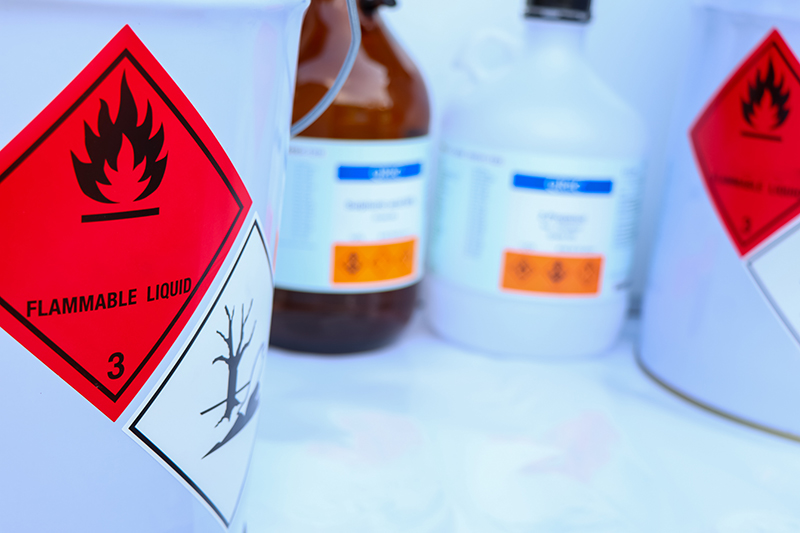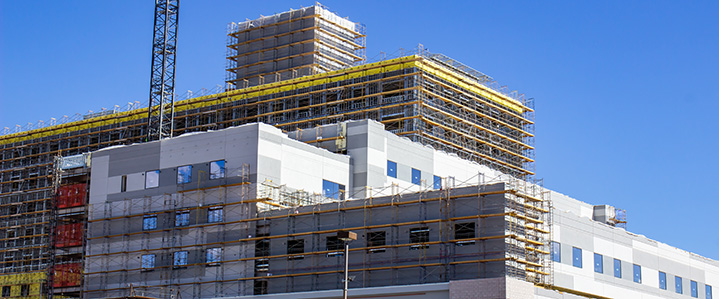What Massachusetts Labs Need to Know About State Fire Code Update

Effective December 9, 2022, Massachusetts amended the state Comprehensive Fire Safety Code 527 CMR 1.00 (Fire Safety Code) to adopt the 2021 edition of National Fire Protection Association (NFPA) 1 and added Massachusetts-specific amendments. Chapter 26 of the Fire Safety Code requires authorities having jurisdiction (AHJs – Fire Department) to obtain additional documentation from existing and new companies with laboratory facilities within their municipalities.
Although this change went into effect at the end of last year, many municipal AHJs are still developing plans for local rulemaking and enforcement. In municipalities where their AHJs have developed administrative processes to comply with Chapter 26, existing buildings and facilities are required to follow the regulatory and permit renewals process set by their AHJs. Consequently, new laboratories can expect the length of time required to secure necessary occupancy and operating permits to increase by as much as eight weeks.
The good news for life science facility owners and operators is that they can look to other municipalities that have already established processes as models of what is to come. With this preparation, organizations can prepare an accurate timeline to operational launch.
Requirements of the new Chapter 26
With the addition of 527 CMR 26.1.6.1.1, laboratories’ building management companies must submit an Emergency Action Plan, Hazardous Materials Management Plan, and Hazardous Materials Inventory Statement with their permit documents in order to receive a Certificate of Occupancy. This documentation must be maintained by the company and is subject to an annual review.
In addition, 527 CMR 26.1.6.1.2 requires submission of a Hazardous Material Building Master Plan report, typically referred to as a 414 report, to the AHJ. This document describes storage of these materials, protection strategies, and the locations where such materials may be kept. Reports must be completed by a fire protection engineer which is a qualified person, firm, or corporation approved by the AHJ.
While these are the basic documentation requirements established by Chapter 26 of the Fire Safety Code, each AHJ has an opportunity to establish their own additional local regulatory and permit processes. Some municipalities, such as Boston, Watertown, and Newton, are already exercising this right. It is important for laboratories to check with their AHJ to find out if there are additional requirements for their local processes.
Existing models can help labs and AHJs prepare
While the requirements in Chapter 26 of the Fire Code may be new for much of Massachusetts, similar regulatory and permit processes are already established in Boston, Cambridge and Watertown and are emerging in Newton. These cities provide a useful model for organizations ready to take steps to prepare for this compliance change, as buildings and laboratories located in these locales are already providing this documentation and complying with the additional local JHA regulatory and permit processes.
In some cases, these early adopting AHJs are requiring more documentation than demanded by the state code. For example, Watertown requires the submission of Tier II forms to provide specific information on potential chemical hazards, even for those organizations with hazardous chemicals that are below the threshold amounts set by the U.S. EPA. It’s a good reminder that organizations will have to navigate the nuances set by their own AHJs.
It’s also worth noting that the new regulatory and permit processes set by these leading municipalities continue to evolve. For example, while Boston’s laboratory registration and permit requirements were implemented in 2022, it made updates to these processes again in early 2023. With this change, the city of Boston now requires fire protection engineers to perform an initial floor inspection prior to the Boston Fire Department’s (BFD) preliminary inspection that grants permission for the laboratory to move in. Once the laboratory is completely set up with chemicals moved in and signage, controls implementation, documentation, etc. in place, Boston requires the fire protection engineers to perform a second inspection before BFD’s final facility inspection. If the laboratory satisfies all BFD requirements, the BFD grants the necessary permit for the laboratory to operate. This four-part process is one reason that new laboratories in other locales should prepare for the possibility that it may take several weeks longer than typically expected to secure permits to occupy and operate.
How labs can prepare
While AHJs across many Massachusetts municipalities are still determining how to move forward with their implementation of the amended 527 CMR, building owners and laboratory managers can and should start preparing for enforcement now. This means gathering information needed to prepare and develop an Emergency Action Plan, Hazardous Materials Management Plan, and Hazardous Materials Inventory Statement, as well as a 414 report. Laboratories may also evaluate whether it serves them to maintain additional support, such as related OSHA documentation. Taking steps to prepare this information today will prevent the risks of noncompliance or loss of productivity once your AHJ updates its requirements.
Laboratories should also consider reaching out to their landlords early to coordinate their documentation efforts. These conversations will prevent delays and unnecessary duplication of records.
Despite the unknowns around timing and specific documentation requirements, the one certainty that laboratories can count on is that change is coming soon. In the meantime, EH&E is working to help real estate developers, property managers, and laboratories across Massachusetts gain the certainty they need to move forward.
If you have questions as this process unrolls, don’t hesitate to contact us.
Subscribe
to our blog
"*" indicates required fields




